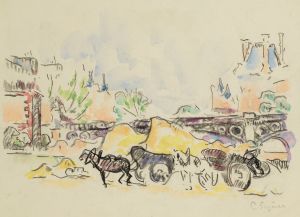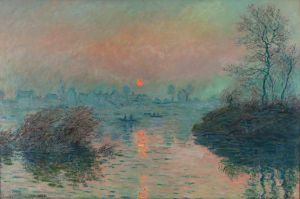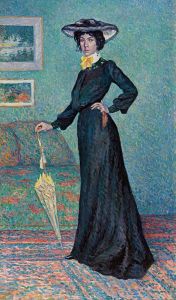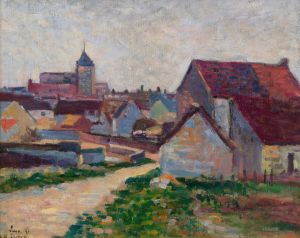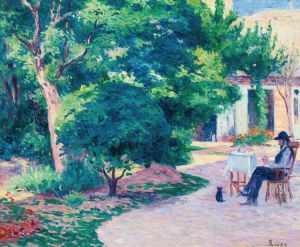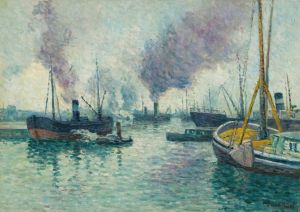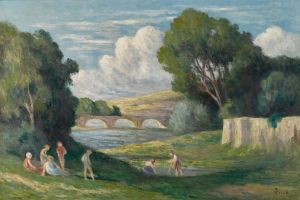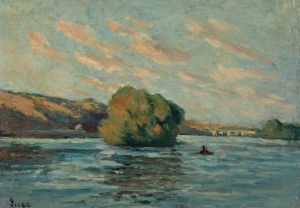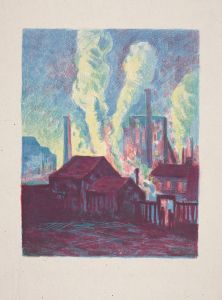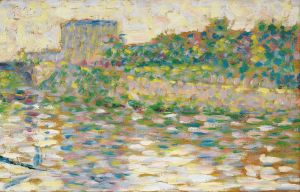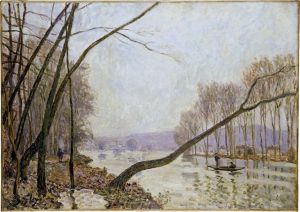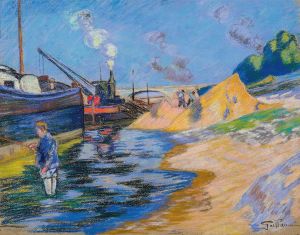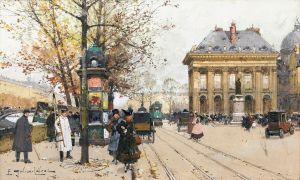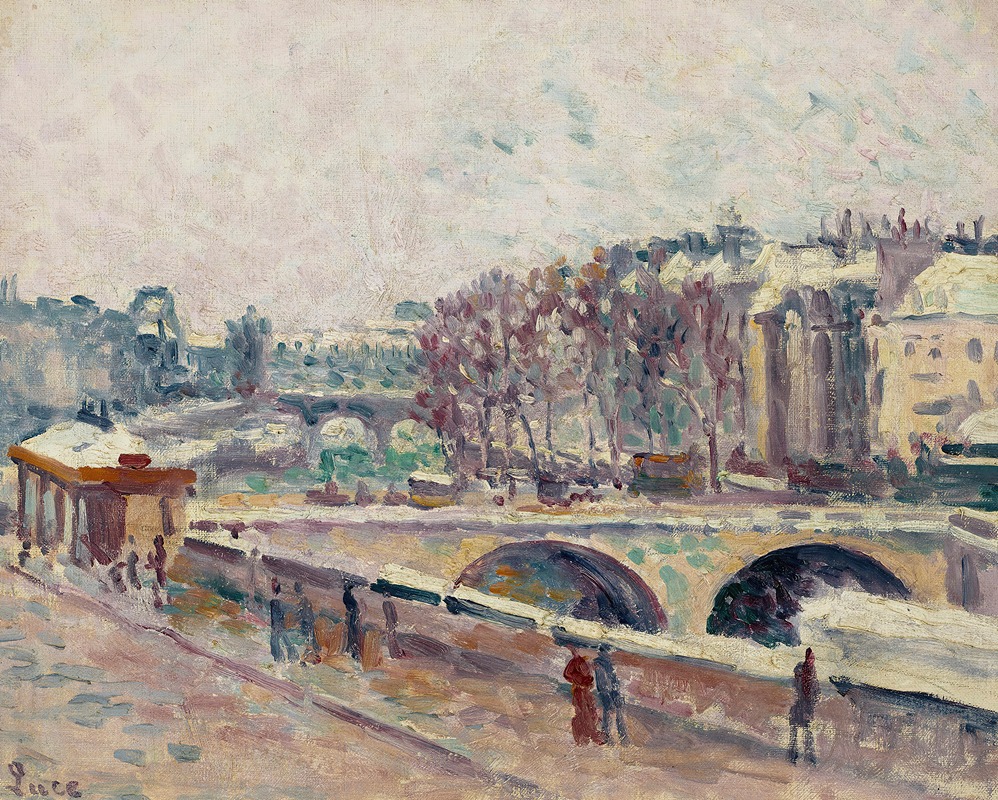
Le Quai Saint-Michel
A hand-painted replica of Maximilien Luce’s masterpiece Le Quai Saint-Michel, meticulously crafted by professional artists to capture the true essence of the original. Each piece is created with museum-quality canvas and rare mineral pigments, carefully painted by experienced artists with delicate brushstrokes and rich, layered colors to perfectly recreate the texture of the original artwork. Unlike machine-printed reproductions, this hand-painted version brings the painting to life, infused with the artist’s emotions and skill in every stroke. Whether for personal collection or home decoration, it instantly elevates the artistic atmosphere of any space.
Maximilien Luce was a prominent French Neo-Impressionist artist known for his paintings, illustrations, and engravings. Born in 1858, Luce was initially trained as an engraver before he transitioned into painting. He became associated with the Neo-Impressionist movement, which was characterized by the use of pointillism—a technique involving the application of small, distinct dots of color to form an image. Luce was influenced by the works of Georges Seurat and Paul Signac, who were pioneers of this style.
"Le Quai Saint-Michel" is one of Luce's notable works, capturing a scene along the Seine River in Paris. The painting depicts the Quai Saint-Michel, a well-known quay located on the left bank of the Seine, near the Île de la Cité. This area is renowned for its picturesque views and historical significance, often serving as a subject for artists seeking to capture the essence of Parisian life.
In "Le Quai Saint-Michel," Luce employs the pointillist technique to create a vibrant and dynamic representation of the scene. The painting is characterized by its meticulous application of color, with small dots and strokes that blend optically to form a cohesive image when viewed from a distance. This technique allows for a luminous quality, capturing the effects of light and atmosphere in a way that traditional brushstrokes might not achieve.
The composition of the painting is carefully structured, with the Seine River serving as a central element that guides the viewer's eye through the scene. The river reflects the surrounding architecture and sky, creating a sense of harmony and continuity. The buildings along the quay are depicted with precision, showcasing Luce's attention to detail and his ability to convey the architectural beauty of Paris.
Luce's choice of subject matter in "Le Quai Saint-Michel" reflects his interest in urban life and the everyday experiences of people in the city. The painting includes figures going about their daily activities, adding a human element to the scene. This focus on ordinary life is a hallmark of Luce's work, as he often sought to depict the realities of modern existence.
Throughout his career, Maximilien Luce was not only an artist but also an active political figure. He was known for his anarchist beliefs and his commitment to social justice, which sometimes influenced the themes of his artwork. However, in "Le Quai Saint-Michel," the emphasis is primarily on the aesthetic and atmospheric qualities of the scene rather than overt political commentary.
"Le Quai Saint-Michel" exemplifies Luce's mastery of the Neo-Impressionist style and his ability to capture the vibrancy of urban landscapes. The painting remains a testament to his skill as a colorist and his dedication to exploring the interplay of light and color. Today, Luce's works are celebrated for their contribution to the Neo-Impressionist movement and their enduring appeal as representations of late 19th and early 20th-century Paris.





